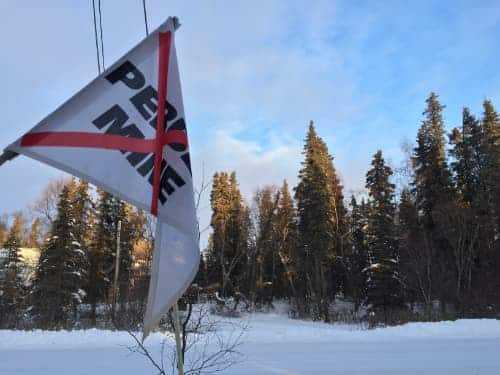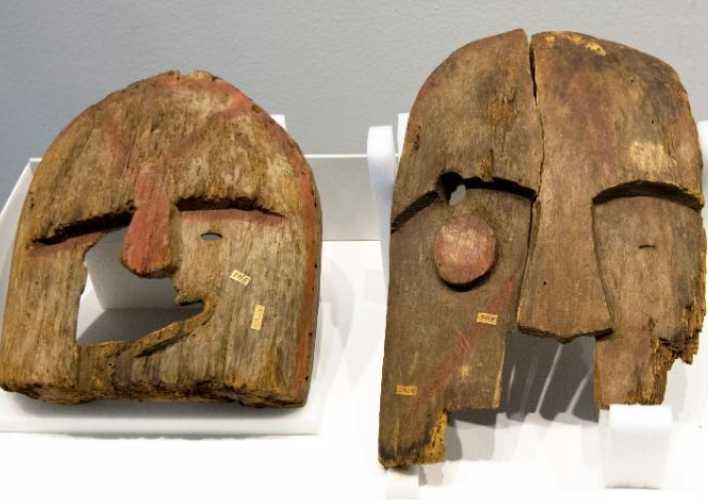Area is ancient homeland of the Kwaashk’iḵwáan clan
(Oral Tradition on Humpback Creek) (Archaeological Interpretation)
 Sealaska Heritage Institute (SHI), Sealaska Corporation and the Yakutat Tlingit Tribe are calling on Yakutat’s Native village corporation to stop logging an area that is a known and important cultural and historic site, until an assessment can be conducted and mitigation plans put in place.
Sealaska Heritage Institute (SHI), Sealaska Corporation and the Yakutat Tlingit Tribe are calling on Yakutat’s Native village corporation to stop logging an area that is a known and important cultural and historic site, until an assessment can be conducted and mitigation plans put in place.
The area, known as Humpback Creek (Kwáashk’ Héeni) in Yakutat Bay, is the ancient homeland of the Kwaashk’iḵwáan clan and where they obtained the humpy salmon crest. The area is so significant that it’s memorialized in clan names, crests, history and identity. “Kwaashk’iḵwáan” literally translates as “people of the Humpback Creek.”
This month, the tribe learned that Yakutat’s village corporation, Yak-tat Kwaan, was logging the site through its wholly owned subsidiary, Yak Timber. While logging, an equipment operator near Humpback Creek discovered an archaeological site reported to consist of several house pits and a series of parallel stone walls laid across a dry creek bed.
Oral traditions tell of Humpback Creek, but until now, no physical evidence of the site had been discovered. Frederica de Laguna, an American ethnologist, anthropologist and archaeologist who studied Native culture in Yakutat extensively, reported local knowledge of a former settlement at this location occupied by the Hmyedi, an Eyak clan, but did not find any physical traces of it. Because of its known historical significance, the reported village and surrounding land were claimed by Sealaska Corporation under the Alaska Native Claims Settlement Act, but the claim was denied due to the lack of supporting archaeological evidence, said archaeologist Aron L. Crowell of the Arctic Studies Center, Smithsonian Institution.
Melenda Lekanof-Baker (Du Keíl) of the Yéil Naa (Raven Moiety), K’ineix Kwáan (People of the Copper River Clan), Tsisk’w Hit (Original Owl House), Kwáashk’ikwáan Clan (People of the Humpback Creek) recalls listening to her grandmother and friends talking in Lingít about Humpback Creek.
“As I listened, I imagined what my people’s village looked like. This is how I know there was a village there because a long time ago my people came from this place, and the village would put up so much salmon, berries and medicines. So being able to evaluate this area and this stone wall that was newly discovered is just a peek of what is out there,” said Lekanof-Baker, who works in sacred sites management for the Yakutat Tlingit Tribe as the Lands And Cultural Resources Director.
“It’s like a gift from our ancestors, reminding us they are here still,” she said. [content id=”79272″]
The site has sacred and spiritual dimensions as well has historic significance, said SHI President Rosita Worl.
“As a village site, it is highly likely that it contains ancestral human remains as well as shamanic burials on the periphery of the village site. Tlingit belief systems hold that we have a duality of spirits — one part that remains with the human remains even after death while the other transfers to the spirit world,” said Worl, noting that Sealaska, when it founded SHI, charged the institute with protecting Native historic and sacred sites.
“SHI has taken that responsibility very seriously,” she said.
Sealaska Corporation has looked to document and care for Tlingit, Haida and Tsimshian sacred sites from the very beginning of its 50-year history. The original Sealaska board called for significant research on documenting these sites, and its research included interviewing Elders and traditional scholars in all communities about sites that were known to them.
“We have prioritized attaining as many sacred sites as possible within our own land selections, and we have partnered with our tribes and SHI to make sure these sites are protected. Our own forestry practices require 300-foot buffers around all known sacred sites, and we stop work if we find undocumented sites and immediately survey the area,” said Sealaska President and CEO Anthony Mallott.
“While Sealaska does not own all the sacred sites we’ve identified, we have partnered, again, with SHI, village corporations, and our local tribes to protect all known sites no matter who the landowner is – the Forest Service, the state, or others. We look forward to the value of the cultural and scientific information that comes from studying this specific sacred site because of the depth of the oral history that pertains to the location,” Mallott said.
The Humpback Cove Village site is potentially one of the most important cultural resources in Yakutat Bay, with strong links to clan histories recounted in oral tradition, said Crowell.
“A remarkable set of cultural features related to salmon harvesting appears to be preserved, and cultural layers at the site could provide a unique record of traditional lifeways and subsistence practices extending back 700 years. Although part of the site has been clearcut, the cultural features do not appear to have been substantially damaged, and their future preservation should be a high priority,” said Crowell, who wrote a summary of traditional knowledge and a preliminary interpretation of the site this week after SHI reached out to him for assistance.
[content id=”79272″]








